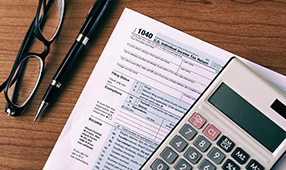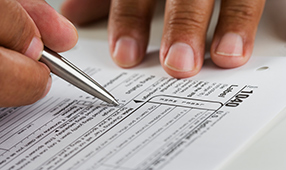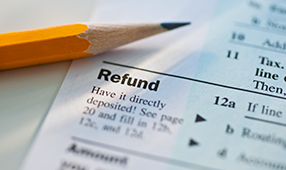So you got a nice, big tax refund this year. Congrats! Now comes the difficult part: How should you spend it?
It’s a decision that many Americans will have to make this year. For last year’s 2018 tax-filing season, the Internal Revenue Service issued about 111 million refunds, with the average refund last year topping $2,781.
Obviously, we’re talking about a lot of money. And it’s tempting to blow it all on an exotic vacation, designer clothes or a state-of-the-art home entertainment center. But you probably want to think twice about such plans.
To help provide some guidance, we’ve spoken to several personal-finance professionals who offered these 6 wise ways to spend your refund:
1. Pay down that credit card balance. Financial experts universally rank paying down expensive debt at the top of the list of “smart tax-refund spending ideas.” And guess where you’re likely keeping your most costly debt? That’s right: It’s generated by that tiny piece of high-rate plastic in your wallet.
“By using proceeds from your tax refund to pay off that debt, you’re reducing your interest,” says Ryan S. Himmel, a certified public accountant (CPA) and president/CEO of BIDaWIZ Inc. “If you think it’s smarter to put money into the stock market, you’ll need to earn 15% to 20% annually [equal to your card’s interest rate] on those investments for that choice to make more sense.”
2. Invest for a comfy retirement. Let’s say you pay off your credit card bill every month. You can opt to invest all or part of your tax refund into your retirement portfolio, and you’ll avoid even more taxes in the process.
“You can sock it away into an IRA—or make additional contributions to your work-based retirement plan—and reap the rewards of tax-deferred investing,” Himmel says. “For many, a Roth IRA is very attractive. The principal grows tax-free, and there’s no required minimum distribution during your lifetime as there is with a traditional IRA and work retirement plan.”
3. Build a “rainy day” cushion. Personal-finance experts recommend that you keep three to six months’ worth of expenses as an emergency fund in a vehicle that’s readily accessible, such as a savings account. Building up that cushion isn’t exactly fun, but it’s necessary in an unpredictable economy.
“No one likes to have an emergency fund—until you have an emergency,” says Chris Reining, founder of MrEverydayDollar.com, a personal finance blog. “Establishing this will help you when there’s a job loss, medical issue or an unexpected home or car repair. Ultimately, you’ll thank yourself that you put aside those 6 months of expenses.”
4. Keep it “in house.” If you own your home, consider making an extra mortgage principal payment, which will lower your overall mortgage debt. However, there are downsides to this idea, especially if you have significant credit card debt, which typically has a higher interest rate than a mortgage. (See suggestion No. 1.)
5. Give it away. Donating all or part of the donation to charity isn’t just the right thing to do; it’s also a smart financial move. Depending on your personal financial situation, it could lower your tax bill.
6. Have fun! OK, we don’t want to be total buzz killers here. It’s perfectly reasonable to enjoy spending a big refund. But maybe you should consider a tech toy or nice dinner as opposed to a luxury cruise or new car.
“I have a little trick you can use here,” Reining says. “I call it the 90/10 rule. Take 90% of your return ($2,700 of the average refund) and commit it to a ‘responsible’ choice. Then, take what’s left over and enjoy that new gadget, fancy dinner or weekend getaway.”
Should you be getting a big tax refund every year?
Receiving a big ol’ check from Uncle Sam can be viewed as a bad thing. Why? Because it represents an interest-free loan you’ve made to the U.S. government. Instead of withholding all of that cash from your paycheck, you could have been putting it to work by building your emergency fund, paying off debt and investing in your retirement.
To avoid excessive withholding and get more money back throughout the year, first discuss your W-4 form with a human-resources representative and/or a certified tax professional. “The number of personal allowances you have depends on your marriage status and dependents,” says Anna K. Pfaehler, certified financial planner (CFP). “The fewer the number of allowances, the greater the withholding rate. If you consistently have a huge refund, you might have too few allowances.”
However, you don’t want to cut the withholdings too close. In fact, financial/investment expert Jim Morrison feels that all the fretting over the “giving the government an interest-free loan” thing is overstated.
At today’s interest rates, you’re giving up a few dollars a year. However, the tax penalties for under-withholding are severe. They also can result in having to file quarterly tax estimates for years. Given that, obsessing about withholding too much simply isn’t worth the potential hassle.










